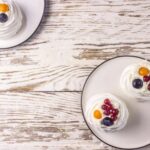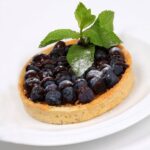Cake decorating is an art that takes a cake from ordinary to extraordinary. And at the heart of this artistic transformation is the icing. Whether you’re celebrating a birthday, wedding, or any special occasion, knowing how to decorate cake icing can elevate your dessert to new heights. In this article, we will explore the basics of cake icing decoration, discussing its importance for visually appealing cakes and delving into the various techniques and tools used.
Cake icing decoration is more than just adding a layer of frosting on top of a cake. It involves intricate designs, patterns, and textures that can turn a simple dessert into a work of art. Decorating icing plays a crucial role in enhancing the overall presentation of a cake. From creating smooth finishes to intricate piping details, the right techniques and tools can make all the difference.
When it comes to cake icing decoration, there are several techniques and tools to choose from. From classic buttercream to fondant or ganache, each type of icing offers unique advantages and challenges. Understanding the pros and cons of each option will help you select the most suitable icing for your desired cake design.
To embark on your journey into cake icing decoration, it’s essential to begin with proper preparation. Preparing the cake layers before applying icing ensures a smooth and even canvas for decorating. Leveling, filling, and crumb coating are key steps in achieving a flawless finish that allows your decorative touches to shine.
In this article on “How to Decorate Cake Icing,” we will explore all aspects of achieving stunning cakes through skillful icing decoration. From choosing the right type of icing for your design to learning essential techniques for beginners and advanced decorators alike, we will provide step-by-step instructions, tips, and troubleshooting advice along the way. So let’s dive in and uncover the secrets behind creating edible masterpieces.
Choosing the Right Icing for Your Cake
When it comes to cake icing decoration, choosing the right icing is crucial. The type of icing you use can greatly impact the overall look and taste of your cake. There are several options to consider, each with its own unique qualities and suitability for different cake designs.
One popular choice for cake decoration is buttercream icing. Buttercream is a creamy and smooth icing that can be easily colored and piped onto cakes. It has a deliciously rich flavor and is perfect for creating various textures and designs. However, buttercream icing can melt easily in warm temperatures, so it may not be the best choice for outdoor events or hot climates.
Fondant icing is another option to consider. Fondant is a pliable sugar paste that can be rolled out and draped over cakes for a sleek, smooth finish. It provides a polished and professional look, making it ideal for formal events or wedding cakes. Fondant also holds up well in different weather conditions but may not appeal to everyone’s taste due to its sweet flavor.
Another popular choice among cake decorators is ganache icing. Ganache is made from a mixture of chocolate and cream, resulting in a rich and decadent frosting. It can be poured over cakes for a glossy finish or whipped into a fluffy consistency for piping decorations. Ganache adds an indulgent touch to any cake design but should be used sparingly as it can be quite heavy.
| Icing Type | Pros | Cons |
|---|---|---|
| Buttercream | Easily colored; versatile for various designs; delicious flavor | Melts easily in warm temperatures; may not hold intricate details |
| Fondant | Sleek and professional appearance; holds up well in different weather conditions | Sweet flavor may not be preferred by everyone; can be time-consuming to work with |
| Ganache | Rich and decadent taste; adds a glossy finish or fluffy texture to cakes | Heavy consistency may overpower the cake; limited color options compared to other icings |
When selecting the most suitable icing for your desired cake design, consider factors such as the theme of the event, the weather conditions, and personal preferences. Experimenting with different icings can also lead to unique and creative results. Remember to always practice and have fun while exploring the world of cake icing decoration.
Preparing the Cake for Icing Decoration
Before diving into the fun and creative process of cake icing decoration, it is crucial to properly prepare the cake layers. Proper preparation ensures that the final result is visually appealing and has a smooth finish. In this section, we will discuss the importance of preparing the cake for icing decoration and provide step-by-step instructions on how to achieve a professional-looking finish.
Firstly, it is essential to level your cake layers. Uneven layers can make it challenging to achieve a symmetrical and balanced design. To level your cakes, use a serrated knife or a cake leveler to carefully trim off any domed tops. Take your time during this step to ensure that all layers are leveled evenly.
After leveling your cakes, it’s time to fill them with delicious fillings or frostings. This step not only adds flavor but also helps in creating a stable structure. Use your desired filling such as buttercream or fruit preserves and spread an even layer over each cake layer. Be mindful not to overfill as it may cause the layers to slide.
Once you’ve filled your cake layers, it’s important to crumb coat the cake before applying the final layer of icing. Crumb coating involves spreading a thin layer of frosting all over the cake to seal in any loose crumbs. This step creates a smooth surface for decorating and prevents unwanted crumbs from mixing into the final coat of icing.
To crumb coat your cake, start by placing a generous amount of frosting on top of one layer and using an offset spatula or a straight-edged knife, spread it evenly over the top and down the sides of the cake. Repeat this process for each additional layer until all sides are covered. Afterward, use your spatula or scraper to smooth out any excess frosting and create clean edges.
Now that you have properly prepared your cakes by leveling, filling, and crumb coating them, they are ready for the final layer of icing and decoration. Following these steps will ensure a flawless and professional finish for your cake.
| Key Points | Instructions |
|---|---|
| Leveling the cake layers | – Use a serrated knife or a cake leveler to trim off any domed tops and ensure even layers. |
| Filling the cakes | – Spread a thin, even layer of desired filling or frosting on each cake layer without overfilling. |
| Crumb coating the cake | – Apply a thin layer of frosting all over the cake to seal in crumbs and create a smooth surface. |
Essential Tools and Supplies for Cake Icing Decoration
To successfully decorate cake icing, having the right tools and supplies is essential. Here is a comprehensive list of items that you will need for cake icing decoration:
Offset Spatula
An offset spatula is a versatile tool used for spreading and smoothing icing on cakes. Its angled blade allows for better control and precision when working with the icing.
Piping Bags and Tips
Piping bags are used to pipe designs onto cakes, while tips determine the shape or pattern of the design. It’s recommended to have a variety of piping tips in different sizes and shapes to create different effects.
Cake Turntable
A cake turntable is a rotating stand that helps with smoothing the icing on all sides of the cake and allows for easier piping or decorating skills.
Bench Scraper
A bench scraper is useful for achieving sharp, smooth edges on cakes by removing excess icing from the sides. It also helps in cleaning up your workspace quickly.
Cake Leveler
A cake leveler ensures that your cake layers are perfectly even before stacking them. This tool allows you to trim any domes or unevenness to create a stable base for your decorated cake.
Icing Smoother
An icing smoother, also known as a decorating comb, is used to achieve a smooth finish on the sides and top of cakes after applying the initial layer of icing.
Fondant Rolling Pin and Mat
If you plan on working with fondant, a rolling pin specifically designed for fondant along with a non-stick mat will make rolling out and handling fondant easier.
It’s important to invest in quality tools and supplies as they can greatly impact your cake decorating results. However, if you are just starting, it’s possible to find affordable options that still work well.
Remember, having the right tools and supplies is only part of the equation for successful cake icing decoration. Practice, experimentation, and a willingness to learn and improve are also essential. With time and dedication, you’ll be able to create beautifully decorated cakes that will impress everyone.
Cake Icing Techniques for Beginners
Decorating a cake with icing can seem like a daunting task for beginners, but with the right techniques and practice, anyone can create beautiful designs on their cakes. In this section, we will explore some simple cake icing techniques that are perfect for beginners to master. From icing smoothing to piping and borders, these techniques will help you achieve a polished look on your cakes.
Icing Smoothing
One of the first techniques every beginner should learn is how to achieve a smooth finish on their cake. Start by applying a crumb coat, which is a thin layer of icing that helps trap any loose crumbs. After the crumb coat has set, use an offset spatula or bench scraper to smooth out the icing.
Hold the spatula at a slight angle and slowly rotate the cake while applying even pressure against the sides, working from top to bottom. Repeat this process until you have achieved a smooth surface.
Piping
Piping is another popular cake icing technique that allows you to add intricate designs or messages to your cakes. To begin piping, fill a piping bag fitted with your desired tip with buttercream or royal icing. Hold the bag at a 45-degree angle above the cake and apply steady pressure as you guide the piping tip along your desired design or lettering. Practice different patterns and shapes on parchment paper before moving onto your actual cake.
Borders
Adding borders around the edges of your cakes can give them an elegant finishing touch. Simply fill a piping bag fitted with a star or round tip with buttercream or ganache and hold it at a 90-degree angle above the edge of your cake. Apply even pressure while gently squeezing out the icing in continuous swirls or beads along the edge of the cake.
By mastering these basic cake icing techniques, beginners can quickly elevate their cake decorating skills and create impressive designs. Remember to start small and practice regularly to gain confidence in using these techniques. With time and patience, you will be able to create stunning cakes that are sure to impress your friends and family.
Intermediate Cake Icing Techniques
Once you have mastered the basics of cake icing decoration, you may want to explore more intermediate techniques to take your skills to the next level. In this section, we will introduce slightly more advanced techniques such as rosettes, ruffles, and writing to help you create show-stopping cakes. With practice and patience, you can achieve professional-looking results that will impress your friends and family.
Rosettes are a popular cake icing technique that adds elegance and dimension to any cake design. To create rosettes, start by preparing a piping bag fitted with a tip of your choice. Hold the piping bag perpendicular to the cake surface and apply pressure while moving in a circular motion. Gradually release the pressure as you reach the desired size for each rosette. Repeat this process until the entire surface is covered with beautiful rosettes.
Ruffles are another intermediate icing technique that can add texture and movement to your cake design. To create ruffles, fill a piping bag fitted with a petal or ruffle tip with your chosen icing. Starting at the base of the cake, apply steady pressure while moving your hand back and forth in gentle waves along the side of the cake. Continue this motion until you reach the top of the cake or achieve the desired effect.
Writing on cakes is a skill that requires practice and attention to detail. To write on cakes using icing, start by preparing a piping bag filled with a small round tip or use pre-filled tubes of writing gel for convenience. Practice writing on parchment paper first to get comfortable with letter formation before moving onto your actual cake. When ready, pipe slowly and steadily onto the cake while maintaining consistent pressure for smooth, legible letters.
Remember that practicing these techniques will help improve your skills over time. Do not be discouraged if your first attempts do not turn out perfectly – it takes time and patience to master these cake icing techniques. Keep experimenting, trying new designs, and pushing yourself to learn and grow as a cake decorator.
Advanced Cake Icing Decoration Ideas
When it comes to cake icing decoration, there are advanced techniques that can take your creations to the next level. These ideas require a bit more skill and practice, but the results are truly stunning. Whether you’re looking to impress guests at a special occasion or want to challenge yourself as a cake decorator, these advanced techniques will surely inspire you.
One popular technique in advanced cake icing decoration is fondant sculpting. Fondant is a versatile medium that can be shaped, molded, and sculpted into various designs and figures. From intricate figurines to detailed scenes, fondant sculpting allows for endless creativity. To achieve professional-looking results with fondant sculpting, it’s essential to use high-quality fondant and have the right tools such as modeling tools and food-safe brushes.
Another advanced technique in cake icing decoration is creating sugar flowers. Sugar flowers are delicate, realistic-looking blooms made entirely out of sugar paste or gum paste. These edible floral decorations add elegance and sophistication to any cake design. Achieving lifelike sugar flowers requires patience, precision, and an understanding of flower anatomy. Specialized equipment such as petal cutters, veiners, and flower formers are necessary for shaping and drying the petals.
If you’re aiming for a show-stopping centerpiece, consider incorporating gravity-defying designs into your cake icing decoration repertoire. This technique involves structurally supporting elements that appear suspended or floating above the cake surface. With careful planning and sturdy supports like hidden dowels or wire frames, you can create visually captivating cakes that defy gravity.
Remember that practice is key when it comes to mastering advanced cake icing decoration ideas. Start by experimenting with smaller projects before taking on more complex designs. Don’t be afraid to seek inspiration from professional decorators or take courses to refine your skills further. With time and dedication, you’ll be able to amaze others with your advanced icing decoration techniques.
Troubleshooting Common Cake Icing Decoration Issues
Air Bubbles in Icing
One common issue that cake decorators often encounter is the presence of air bubbles in their icing. These unsightly bubbles can detract from the overall appearance of the cake, leaving it looking less professional. Fortunately, there are several ways to minimize and even eliminate air bubbles in your icing.
To prevent air bubbles from forming in your icing, it is important to properly mix and prepare the icing. Start by sifting powdered sugar before adding it to the other ingredients, as this helps to break up any clumps that could lead to air pockets. When mixing the icing, do so at a low speed to avoid incorporating excess air into the mixture.
If you still find air bubbles in your icing after it has been applied to the cake, there are techniques you can use to remove them. One option is gently tapping or shaking the cake on a flat surface immediately after applying the icing. This helps to release any trapped air bubbles and creates a smoother surface.
Melting Icing
Another frustrating problem that cake decorators may encounter is melting icing. This can occur when working with buttercream or other types of icings that are sensitive to temperature changes. Melting icing can result in a messy appearance and cause decorations to lose their shape or collapse completely.
To prevent melting icing, it is crucial to ensure that your cake is properly chilled before decorating. Keeping the cake in the refrigerator for at least 30 minutes prior to decorating will help firm up the icing and make it less prone to melting.
In addition, avoid working with icing in hot or humid conditions, as this can exacerbate melting issues. If necessary, work in an air-conditioned space or use fans to keep the area cool and dry.
If your icing starts melting while you are working on a cake, try placing it in the refrigerator for a short period of time to firm it up again. However, be cautious not to leave it in for too long, as over-chilling can cause the icing to become stiff and difficult to work with.
Uneven Icing Texture
Achieving a smooth and even texture on your cake icing is essential for a polished look. Uneven icing texture can occur due to a variety of factors, such as improper cake preparation or application techniques.
One way to ensure a smooth icing texture is by properly leveling your cake before applying the icing. Use a serrated knife or cake leveler to remove any domed or uneven portions from the top of each cake layer. This will create a flat surface for the icing to adhere to, resulting in a more even texture.
Another tip is to apply a crumb coat before adding the final layer of icing. A crumb coat is a thin layer of icing that helps seal in any loose crumbs and provide a smooth base for the final layer of decoration. By taking this extra step, you can prevent crumbs from showing through the final layer and achieve an overall more consistent texture.
Finally, pay attention to your application technique when smoothing the icing onto the cake. Use an offset spatula or cake smoother to gently spread and blend the icing in smooth strokes. Taking your time and using steady, even pressure will help minimize any unevenness in the final result.
By troubleshooting these common issues and following these tips, you can overcome potential challenges in cake icing decoration and achieve stunning results every time. Remember that practice makes perfect, so don’t be discouraged if you encounter setbacks along the way. With patience and determination, you’ll soon master the art of decorating cake icing like a pro.
Conclusion and Final Tips for Perfect Cake Icing Decoration
In conclusion, cake icing decoration is a skill that can transform an ordinary cake into a visually stunning masterpiece. Throughout this article, we have explored the basics of cake icing decoration, discussed different types of icing options, and provided tips on preparing the cake for icing decoration. We have also covered essential tools and supplies needed for cake icing decoration, as well as techniques for beginners, intermediate decorators, and advanced decorators.
To achieve perfect cake icing decoration, it is important to remember a few final tips. First, practice makes perfect. Don’t be discouraged if your first attempt doesn’t turn out exactly as you envisioned. With time and practice, your skills will improve. It is also essential to experiment with different techniques and designs. Don’t be afraid to try new things and push the boundaries of your creativity.
Additionally, always have fun with your icing decoration endeavors. Enjoy the process of creating edible art and let your passion shine through in your designs. Finally, remember that there are no limits to what you can achieve with cake icing decoration. Let your imagination run wild and don’t be afraid to take risks.
So go ahead and unleash your inner artist in the kitchen. With the knowledge gained from this article and a little bit of patience and practice, you too can become a master at decorating cake icing. Whether you’re decorating cakes for special occasions or simply indulging in a hobby that brings you joy, perfecting your cake icing decoration skills is sure to impress both yourself and those lucky enough to enjoy your delectable creations.

Welcome to my blog about home and family. This blog is a place where I will share my thoughts, ideas, and experiences related to these important topics. I am a stay-at-home mom with two young children. I hope you enjoy reading it! and may find some helpful tips and ideas that will make your home and family life even better!





